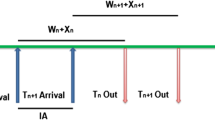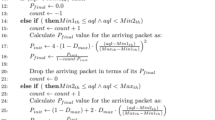Abstract
Under the circumstance of congestion, the low-efficiency operation of security system is one of the major causes of frequent security incidents over the span of recent years. At the same time, identifying the potential bottleneck which disrupts the audience is an effective way to explore new solutions of security issues, and use mathematical models to develop the most efficient and effective security screening system. In this paper, the security system of Luzhniki stadium in 2018 is instance model. The queuing theory is used to construct the model (MMS), while according to the Poisson distribution and network science to analyze bottlenecks, models and results. Both practical and cultural factors are considered in the model optimization process. In this way, the target loop checkpoint system is designed, and the convolution neural network algorithm is added to the system to classify and dispose the captured images. The purpose is to improve security efficiency by increasing the flow of people in best use of space.













Similar content being viewed by others
References
Zeng, Y. (2015). Review of studies on applications of queuing theory in library management. Information Research, 02, 5–9.
Zhang, J. (1986). Quantitative analysis of library lending system—Application of “queuing theory” in library lending system. Journal of Library Science, 03, 34–38.
Erlang, A. K. (1909). The theory of probabilities and telephone conversations. NytTidsskrift for Matematik B, 20(6), 87–98.
Xiang, H. (2012). Talking about Poisson distribution and its application. Learning Weekly, 10, 205.
Wang, K. (1997). Moscow is a sports city. Sports World (Scholarly), 5, 15.
Qiu, W. (2017). Research on improving the ability of security check specialty in popular sports halls. Science & Technology Information, 13, 242–243.
Zhou, F. Y., Jin, L. P., & Dong, J. (2017). Review of convolutional neural network. Chinese Journal of Computers.
Girshick, R., Donahue, J., Darrell, T., & Malik, J. (2014). Rich feature hierarchies for accurate object detection and semantic segmentation. In Proceedings of the IEEE conference on computer vision and pattern recognition, pp. 580–587.
Ren, S., He, K., Girshick, R., & Sun, J. (2015). Faster R-CNN: Towards real-time object detection with region proposal networks. In Advances in neural information processing systems, pp. 91–99.
Baccouche, M., Mamalet, F., Wolf, C., Garcia, C., & Baskurt, A. (2011, November). Sequential deep learning for human action recognition. In International workshop on human behavior understanding (pp. 29–39). Berlin, Heidelberg: Springer.
Acknowledgements
This paper is supported by Major Program of the National Social Science Foundation of China under Grant No. 15ZDB154, National Basic Research Program of China (973 Program) under Grant No. 2012CB315805, and National Natural Science Foundation of China under Grant No. 71172135.
Author information
Authors and Affiliations
Corresponding author
Rights and permissions
About this article
Cite this article
Liu, J., Qi, X., Xu, Y. et al. Queuing Strategy Optimization with Restricted Service Resources. Wireless Pers Commun 102, 2681–2699 (2018). https://doi.org/10.1007/s11277-018-5295-3
Published:
Issue Date:
DOI: https://doi.org/10.1007/s11277-018-5295-3




